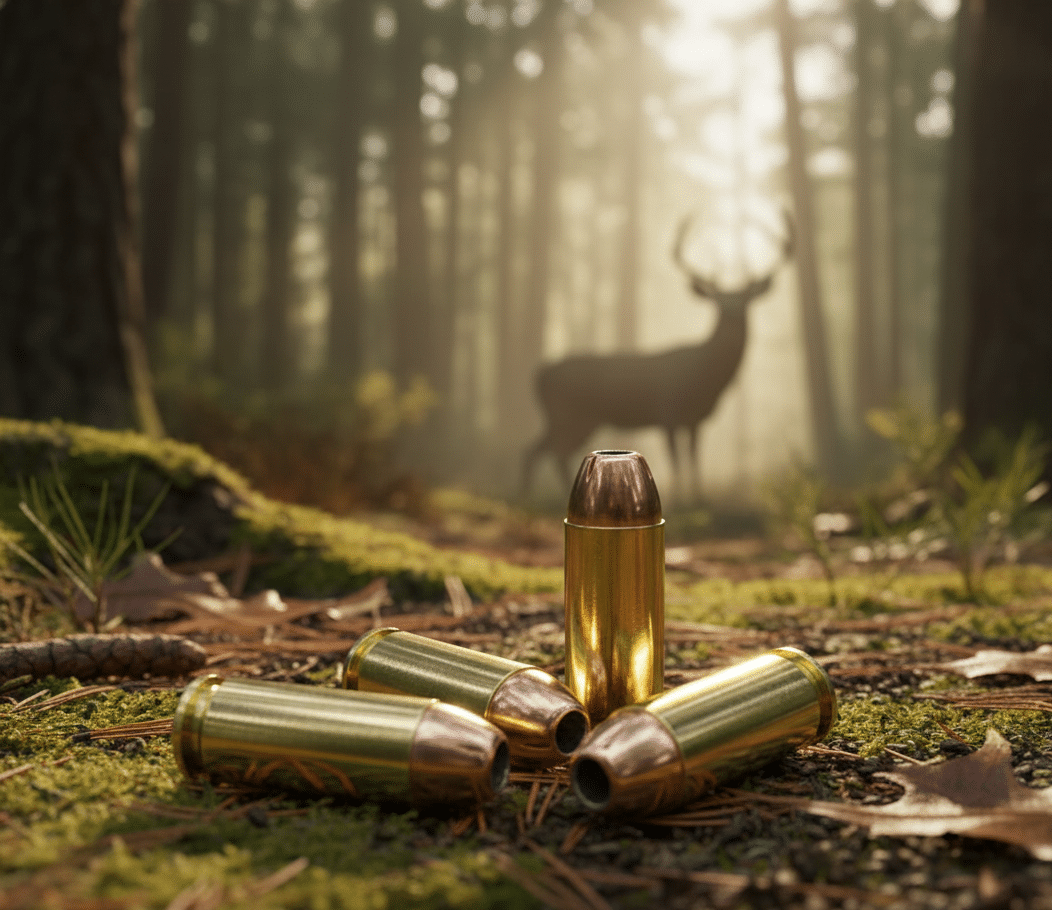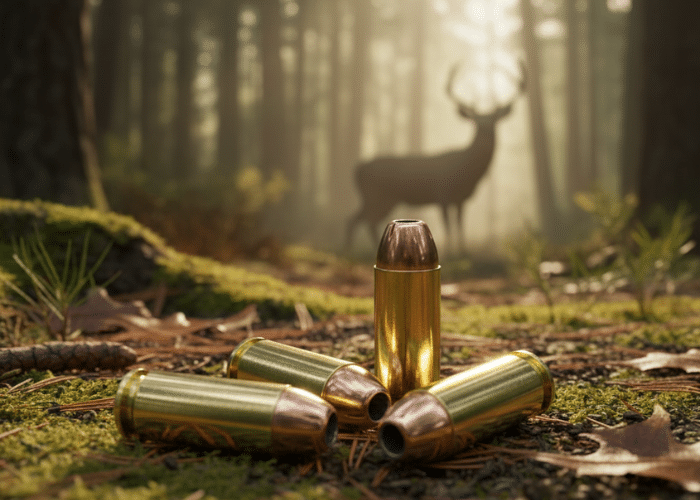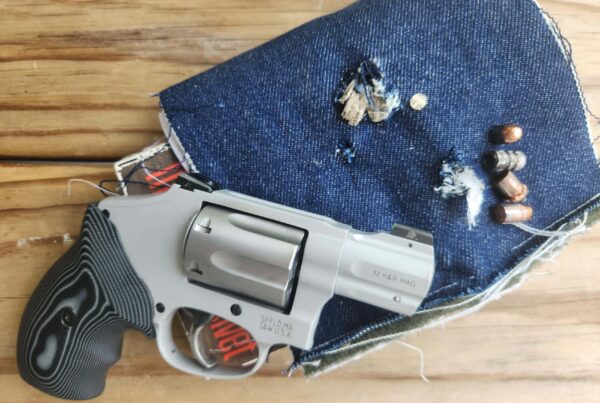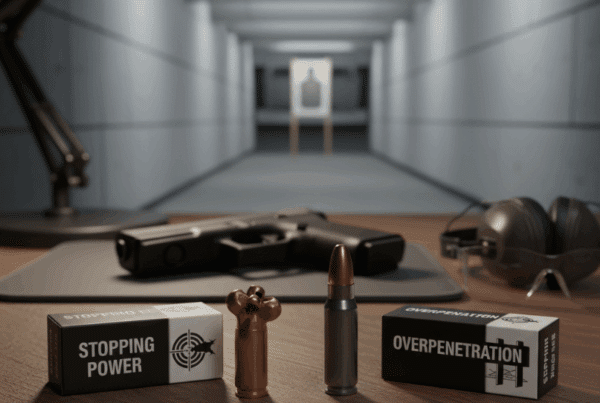Are you a new hunter, wondering whether hollow points are suitable? If you’ve been thinking whether hollow points for big game make sense, you’re not alone. Most people will agree to it, while some may raise an eyebrow, especially when they hear “hollow point” and immediately think of handgun ammo or home defense. The truth is, modern hollow points have come a long way, and when chosen correctly, they offer serious performance in the field.
This post discusses the use of hollow points for big game harvests, what makes them work, when they are appropriate, and how to pick the right one for your next hunt.
What Are Hollow Point Bullets?
A hollow-point bullet has a small cavity in the tip. This isn’t a design flaw; it’s intentional. The hollow tip allows the bullet to expand upon impact with tissue. This expansion increases the diameter of the bullet inside the target, enhancing energy transfer and resulting in more controlled damage.
This design strikes a balance between penetration and expansion. So, what’s the intention behind this design? Clearly, maximize stopping power without wasting energy or punching through too far.
Types of Hollow Points
Here are some varieties of hollow-point bullets.
- Standard Hollow Points: These are reliable and commonly used for both self-defense and smaller game. While it does expand, it may not be ideal for large animals unless the velocity and weight are sufficient.
- Bonded Hollow Points: In these bullets, the jacket and core are chemically or mechanically bonded. These are designed for big game bullet selection where weight retention and deeper penetration are essential.
- Controlled Expansion Hollow Points: These are engineered to expand uniformly, reducing fragmentation while still increasing diameter on impact.
- Polymer-Tipped Hollow Points: The polymer tip enhances aerodynamics and facilitates expansion upon impact. Hornady SST or Nosler Ballistic Tip are common examples of polymer-tipped hollow points.
Each type has its place depending on what you’re hunting, what caliber you’re using, and your personal preference.
How Hollow Points Differ from Soft Points and Full Metal Jacket
Here are some key differences between hollow points, soft points, and FMJ. Let’s compare.
- Full Metal Jacket (FMJ): It is great for the range, but often not for ethical shots on big game. These bullets usually pass through with minimal expansion, often resulting in reduced terminal performance.
- Soft Points: These expand, but not as aggressively as hollow points. While they are better than FMJ, these bullets may sometimes lack in tissue damage or consistent wound channels These place a priority on penetration.
- Hollow Points: Designed for more expansion, they open up fast, transfer energy efficiently, and reduce the chance of over-penetration and lost energy.
Simply put, hunting hollow points are designed for one purpose: to deliver a clean, ethical harvest by transferring as much energy as possible into the animal, not beyond it.
Why Hollow Points Work for Big Game
Here are some reasons why hollow-point bullets work well for big game hunting.
- Controlled Expansion: On impact, a hollow point flattens and mushrooms outward. This controlled expansion means more tissue is damaged, and vital organs are more likely to be hit. That’s key for taking down elk, deer, or bear cleanly.
- Penetration and Retained Weight: Here’s where Solid Copper Hollow Points, bonded or heavier bullets shine. A hollow point doesn’t have to be fragile. With modern materials and bonding techniques, you achieve both expansion and the depth required for vital-zone penetration, without overexertion. You often want the bullet to stop in the animal, not keep going through it.
- Ethical Harvesting: Quick, humane kills matter. Hollow points help minimize suffering by delivering efficient energy and damaging critical organs. That’s why many seasoned hunters consider them part of an ethical hunting rounds setup, if paired with the right caliber and shot placement.
Performance Considerations
Here are some performance considerations when using hollow-point bullets.
- Bullet Velocity and Energy: Too slow, and the hollow point might not expand properly- behaving similar to an FMJ. Too fast, and it could break apart. Matching velocity with bullet design is key. For example, a bonded hollow point in .300 Win Mag will behave differently than a standard one fired from a .30-30.
- Shot Placement Importance: Even the best bullet won’t fix a bad shot. Hollow points are most effective when hitting vital areas such as the lungs or the heart. Shoulder shots may require a tougher bullet with higher sectional density.
- Caliber Selection for Hollow Points: You wouldn’t use a 9mm hollow point on a bull elk. However, for smaller deer or hogs at close range,(especially with a longer-barrel PCC) it might work, if legal. For bigger game, consider larger options such as
- Deer: .308 Winchester, .30-06 Springfield, 45-70
- Elk: .300 Win Mag, .338 Federal, 45-70, 30-06
- Bear: .45-70 Government, .375 H&H
Match your cartridge to the game, terrain, and your own comfort with recoil and accuracy.
Common Myths About Hollow Points
Here are some common myths surrounding hollow points. This section counters them.
- Hollow Points Don’t Penetrate Enough: This is a common myth you might have heard. Properly chosen hollow points, especially bonded or those which offer controlled expansion, punch deep. While they may not penetrate like a proper hard cast bullet, oftentimes this level of penetration is not required. The key is matching construction to your game.
- Hollow Points Are Only for Handguns: Hollow-point rifle rounds are used by hunters across the U.S. and abroad. From .223 varmint rounds to .458 SOCOM big game loads, rifle hollow points are everywhere.
- Any Hollow Point Works for Big Game: That’s a risky assumption. Not all are built for the same job. A self-defense handgun hollow point isn’t going to perform the same as a 180-grain bonded rifle bullet. Ammo construction for elk, deer, or bear needs to be chosen intentionally.
Practical Tips for Using Hollow Points
Here are some easy and practical tips to follow when using hollow points.
- Choosing the Right Bullet: You can choose:
- Bonded bullets for heavy game.
- Standard hollow points for lighter game
- Polymer-tipped for long-range accuracy.
- Testing and Practice: Always test your load at the range. Look for dependable accuracy, and test for expansion in ballistic gel or even water jugs.
- Hunting Ethics and Legal Compliance: Some states restrict certain ammo types. Always check your local laws. Be sure your choice supports ethical hunting rounds and legal requirements.
Recommended Hollow Point Calibers for Big Game
Here are some options that offer time-tested hollow-point hunting results:
Rifle:
Handgun (for close-range, smaller game or backup use):
- 9mm (only in very limited roles with proper bullets)
- 10mm Auto
- .44 Magnum
- 45 Colt, .454 Casull, 460 S&W Magnum
- 500 S&W Special and Magnum
After all, shot placement is king. Use a bullet that delivers both penetration and expansion in your chosen caliber.
Want better results in the field? Pair your rifle with the right hollow point. Also, before heading out, always double-check the state hunting laws. At Steinel Ammunition Co., we take bullet construction seriously. Whether you’re after deer, elk, or something toothier, choosing the right ammo makes all the difference. We also provide select reloading components, including brass and cast lead bullets, and custom tooling for serious reloaders. Your success and the animal’s quick, ethical harvest depends on it.
FAQ’s
1. Can I use hollow points for elk?
A. Yes, if you use the right ones. Look for bonded or controlled-expansion rifle bullets in a suitable caliber.
2. Are hollow points legal for hunting?
A. In most states, yes. But always double-check. Some areas restrict expanding ammo for hunting or self-defense.
3. What’s better for bear, a soft point or hollow point?
A. It depends. For dangerous game like brown bear, many hunters prefer heavy hard cast, bonded hollow points,solid monolithic bullets with proven shot placement and terminal ballistics.
4. Is over-penetration ever a concern in hunting?
A. Yes, especially if you’re near property lines or hunting in thick cover. That’s one reason why expansion vs penetration matter.







I want to deer hunt with 8.6 blkout w 18″ barrel ar10 what’s best for me?
If you’re using a suppressor it’s impossible to beat our 350gr SCHP. Supersonic: I don’t have much experience with competitive offerings, but a reputable company that uses a SCHP or another trusted, high-performance projectile will do great.